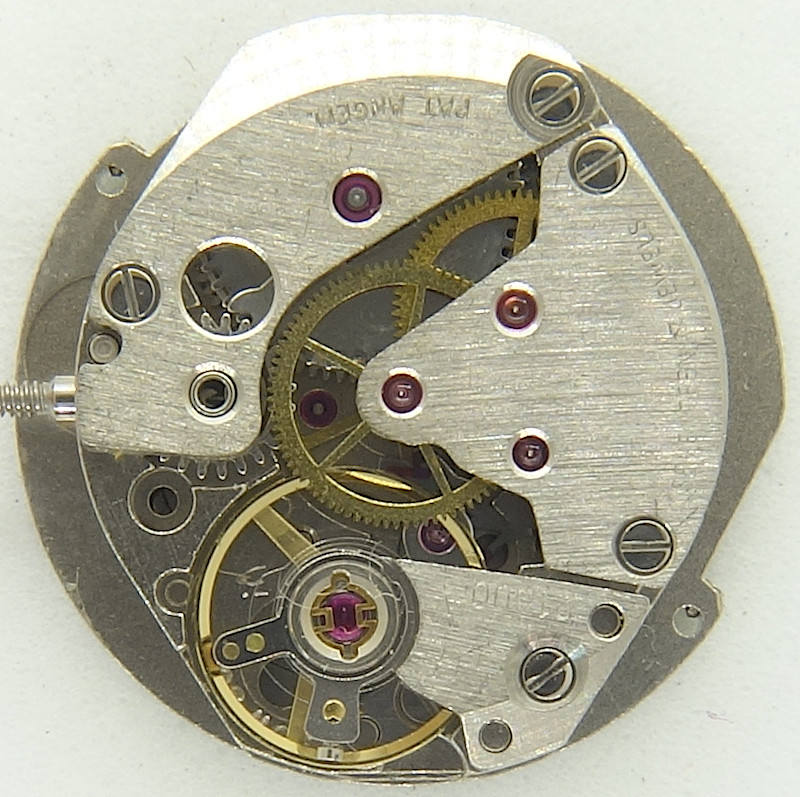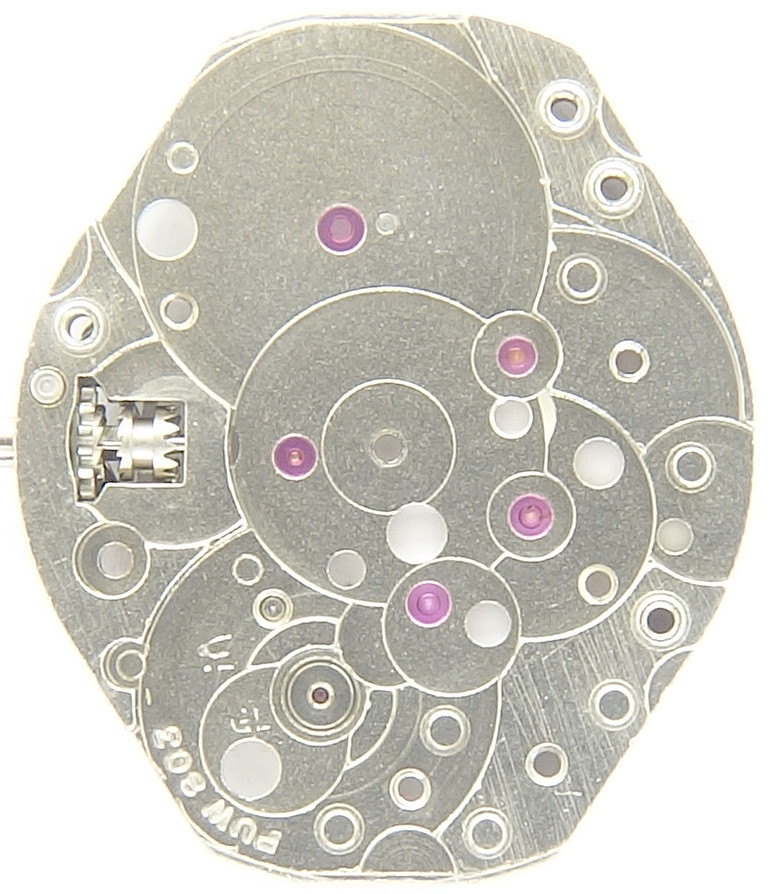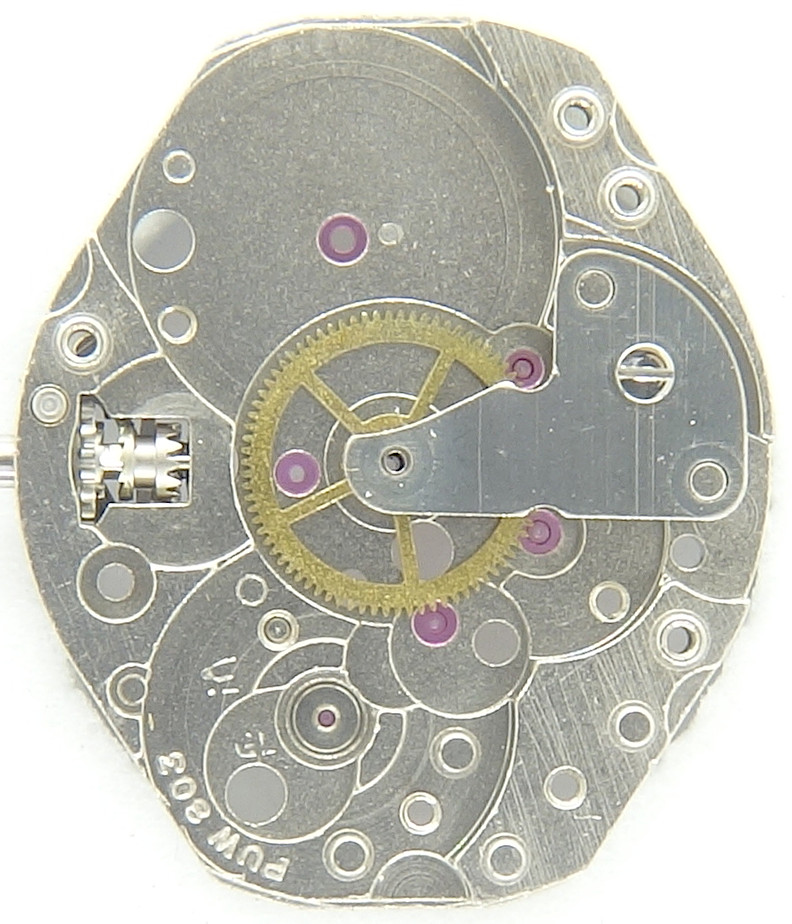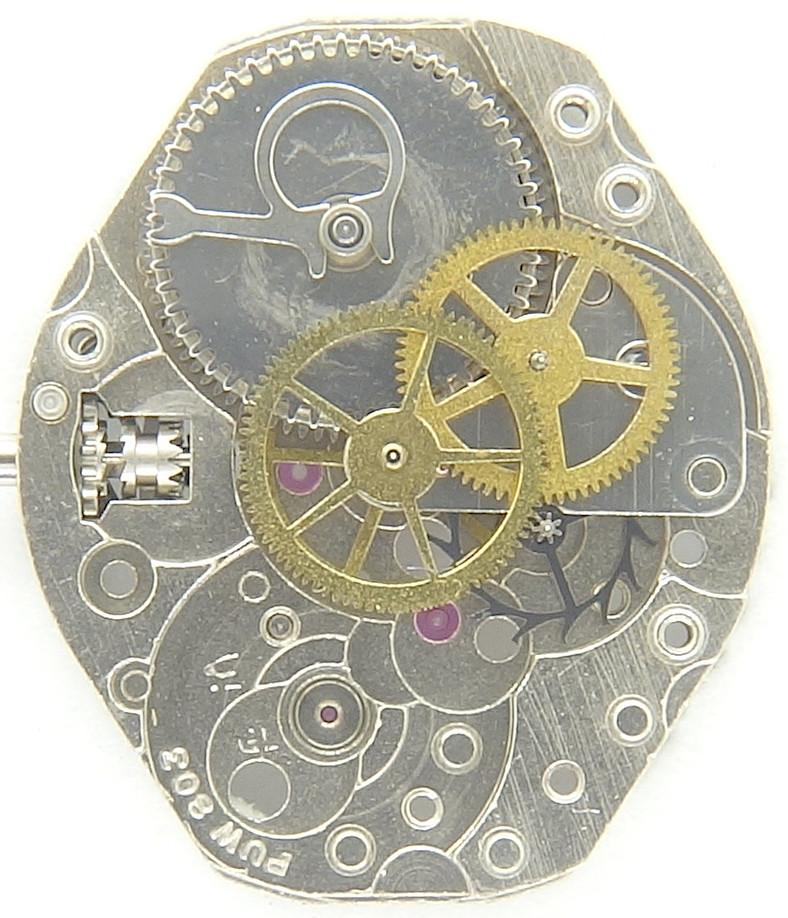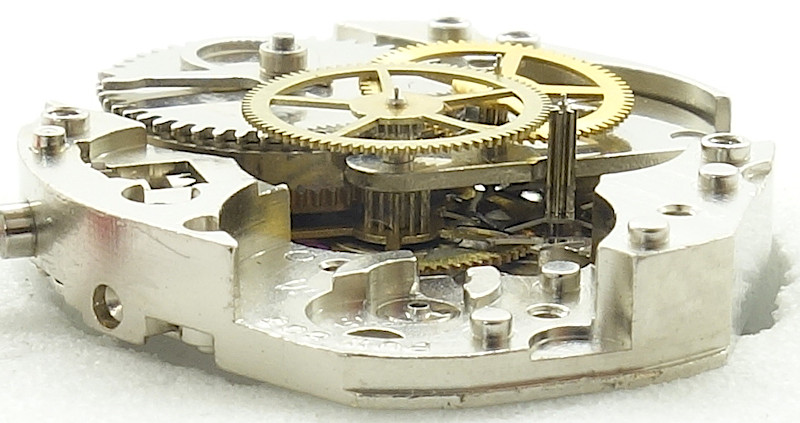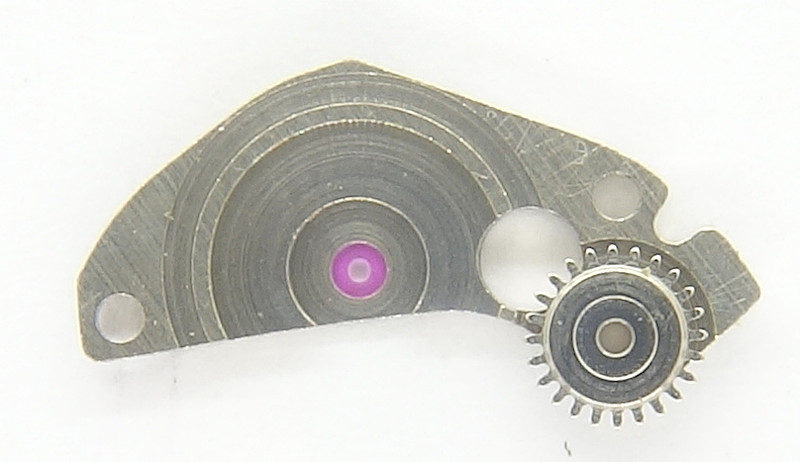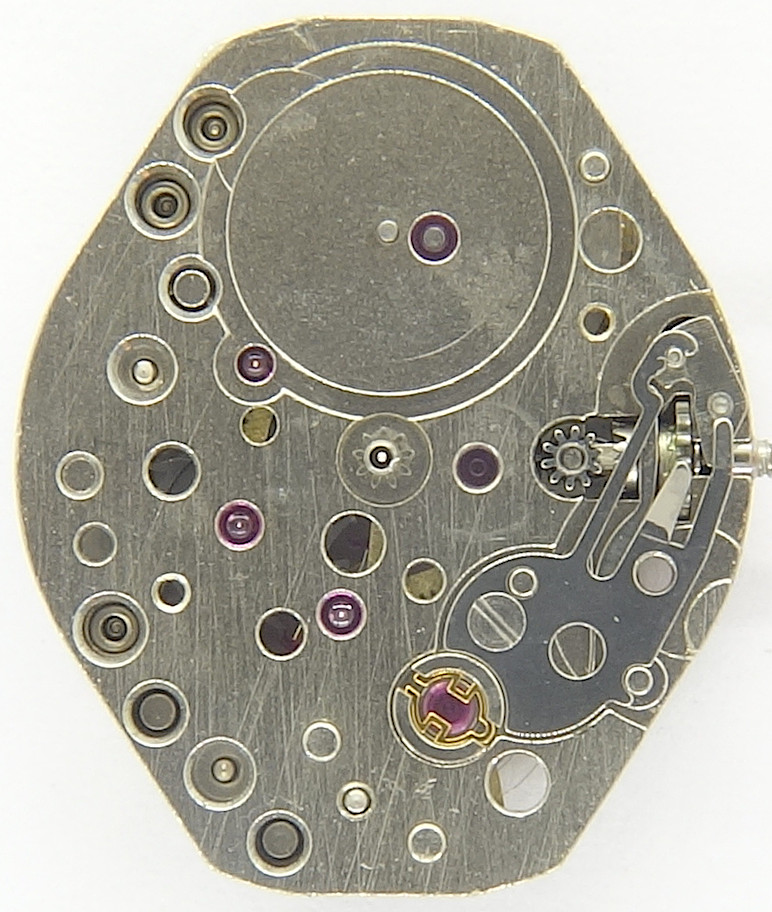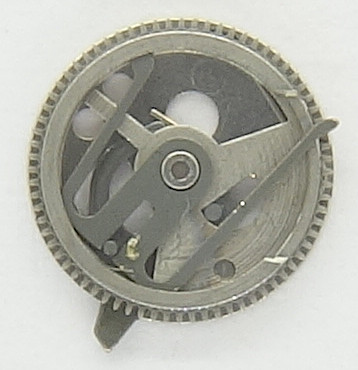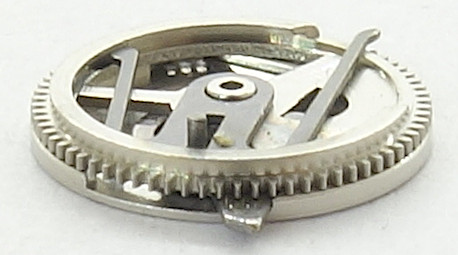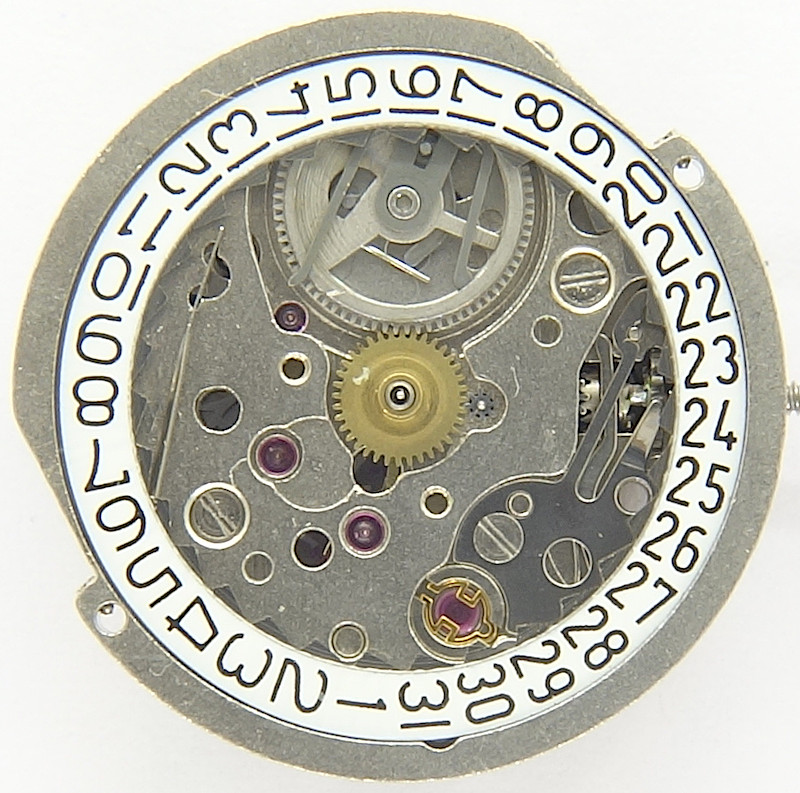Description
1975, the german Pforzheimer Uhrenrohwerke (PUW) released their final series of windup movements in ladies’ watch size, the caliber series 800.
The PUW 803 was the version with center second and day-date indication, which has because of the calendar module, mounted on the dial side, no longer a form movement, but a round movement with a diameter of 18,5mm. Remember, in the late 1970ies, tiny ladies’ watches were still highly demanded.
As you can see, except for the center minute wheel, all bearings contain rubies, even the mainspring barrel bearing. And the jewel at 9 o’clock is noteworthy, too, since it bears the change wheel on the dial side..
Because of the small size of the base movement is was probably not possible to use a modern indirectly driven center minute wheel, so here a directly driven (by the mainspring barrel) center minute wheel was used, a very classical construction.
The gear train uses, because of the directly driven center seconds, unusally large gears for this kind of movement.
The mainspring barrel carries its ratchet on its upper side, which engages with the crown wheel, when it turns slightly backwards.
The PUW 803 uses a screw less anular balance with three legs, which is beared in two RUFA Antishock protection bearings. It beats with 21600 A/h and can be adjusted at the hairspring key only. As escapement, a traditional swiss pallet lever escapement is used.
On the inner side of the mainspring barrel bridge, the crown wheel is riveted.
On the yet empty dial side, you can spot the preparations for the calendar switching wheel at 12 o’clock and at 3 o’clock there’s the ruby beared change wheel, as noted above.
The calendar switching wheel is a pretty complex construction, which is not only made for advancing the date ring (and semi-fast correction by turing the hands back and forth), but also for advancing the bilingual weekday disc at midnight.
The pin engages with the date ring, the finger with the weekday disc. Both advance instantly at midnight.
The calendar module ring is mounted onto the form movement. It bears the date ring and ensures, that the finger of the date switching wheel gets the neccessiary amount of tension, so that unloads precisely at midnight and advances the calendar.
The switching wheel is driven by the hour wheel.
A spring at 8 o’clock engages with the sawteeth of the date ring and ensures, that the digits are always in the correct position. At 12 o’clock, you can spot the finger of the date switching wheel and how it will engage with the date ring. This finger is connected with a kind of slipping clutch with the wheel, so that it can build up enough tension to unload abruptly at midnight and advance the date ring one position.
For a secure mounting of the calendar mechanism parts, they are covered with a deck plate. It also has got an attached spring with a flatround plate, which locks the weekday disc.
Although this movement was already modern and rationally constructed, and offered many functions with a bilingual weekday disc and date indication, it had no chance at the end to compete with the upcomimg quartz movements. The PUW belonged to the early manufacturies, besides Junghans, which exclusively made quartz movements and no longer mechanical ones, but at the end, the drop in prices and the competition from far eastern manufacuries led to the end of the PUW in 1990.
In the lab
Technical data
| Manufacturer: | PUW |
| Caliber: | 803 |
| Size: | 8 1/4''' (measured: 18,6mm) |
| A/h: | 21600 |
| Number of jewels: | 17 |
| Escapement: | Pallet lever |
| Balance types: |
Nickel screw balance |
| Shock protection(s): |
Rufa-Anti-Shock |
| Balance bearing / direction hairspring: | Clockwise |
| Moveable stud: | yes |
| Adjust mechanism: | Hairspring key |
| Construction: |
|
| Construction type: | solid construction |
| Winding mechanism: | yoke winding system |
| Setting lever spring: | 4 hole(s) |
| Features: |
|
| Production period: | 1975 - 1979 |
| Inventory number: | 20028 |
